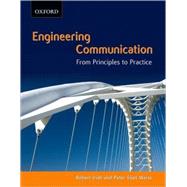
| Preface | p. v |
| Introduction | p. 1 |
| Getting Started: Pre-drafting and Drafting | p. 15 |
| Purpose, Genre, and Audience | p. 17 |
| Finding Purpose | p. 18 |
| Improvising Genre | p. 24 |
| Constructing Audience | p. 46 |
| Strategies for Invention | p. 55 |
| Developing a Credible Argument | p. 56 |
| Using Rhetorical Tools Consciously | p. 68 |
| Building Effective Introductions | p. 83 |
| Modes of Control: Tools for Revision | p. 91 |
| Directing the Advance | p. 93 |
| Framing Knowledge | p. 94 |
| Building Visible Structure | p. 101 |
| Directing the Reader Rhetorically | p. 106 |
| Making Transitions | p. 110 |
| Creating Clarity and Cohesion | p. 126 |
| Designing Paragraphs | p. 127 |
| Moving from Known to New | p. 142 |
| Modifying Matters | p. 149 |
| Elements of Refined Design | p. 165 |
| Generating Flow | p. 167 |
| Elevating Verbs | p. 168 |
| Positioning the Verb | p. 174 |
| Finding the Real Subject | p. 176 |
| Capitalizing on the Power Position | p. 183 |
| Engineering Elegance | p. 185 |
| Determining Sentence Length | p. 186 |
| Mastering Sentence Rhythm | p. 194 |
| Applications | p. 205 |
| Applying the Principles to Visual Communication | p. 207 |
| Applying the Principles to Written Communication | p. 225 |
| Applying the Principles to Oral Communication | p. 243 |
| Conclusion From Principles to Practice | p. 284 |
| Appendices | p. 293 |
| Core Sentence Components: Clauses | p. 294 |
| Sentence Types | p. 299 |
| Action Elements: Verbs and Verbals | p. 308 |
| Optional Sentence Elements: Modifiers | p. 316 |
| Joiners | p. 323 |
| Punctuation | p. 327 |
| Fallacies | p. 332 |
| References | p. 338 |
| Index | p. 342 |
| Table of Contents provided by Ingram. All Rights Reserved. |
The New copy of this book will include any supplemental materials advertised. Please check the title of the book to determine if it should include any access cards, study guides, lab manuals, CDs, etc.
The Used, Rental and eBook copies of this book are not guaranteed to include any supplemental materials. Typically, only the book itself is included. This is true even if the title states it includes any access cards, study guides, lab manuals, CDs, etc.